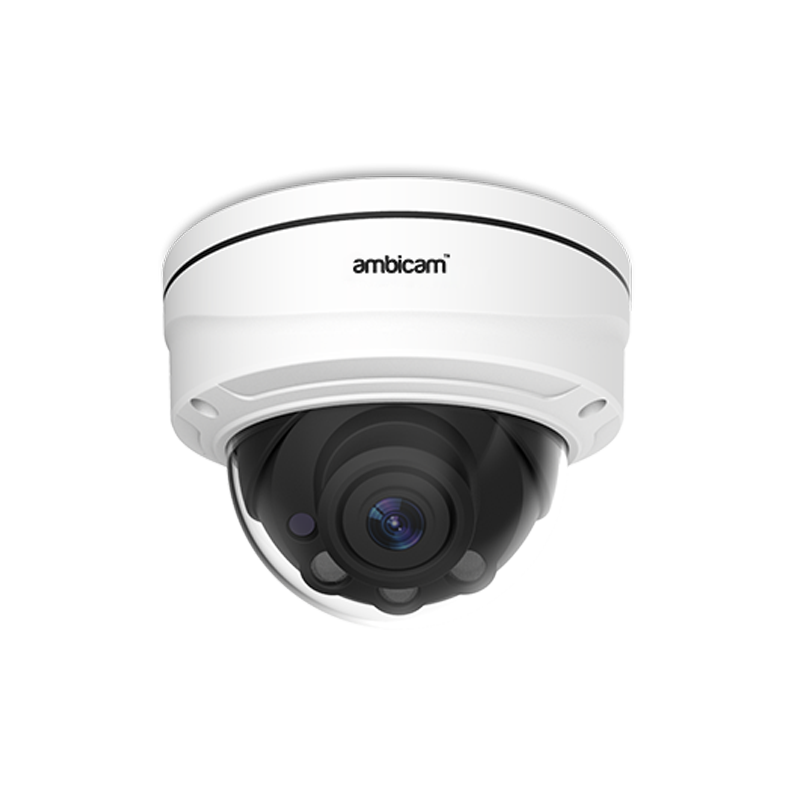Introduction
In an era where safety concerns are prevalent, facial recognition security camera has emerged as a revolutionary tool. These cameras leverage advanced algorithms to identify and verify individuals in real time. As technology progresses, they play a crucial role in enhancing public safety. Society faces increasing crime rates, and traditional security methods are often insufficient. Facial recognition technology addresses this gap effectively. With their ability to process vast amounts of data instantly, these cameras offer a more reliable solution to security issues. Moreover, their applications extend beyond mere surveillance. They can also enhance user experiences in various sectors, such as retail and transportation. As a result, facial recognition security camera has gained popularity across multiple industries. However, they also raise important ethical and societal questions. Therefore, understanding both the benefits and challenges is essential for their responsible implementation. Balancing security needs and privacy standards requires informed discussions and policies.
Understanding Facial Recognition Technology
Facial recognition technology operates through intricate systems that analyze facial features. It uses algorithms to map the unique geometrical characteristics of a person’s face. Cameras capture images in real time, converting them into numerical data. This data is then compared to existing databases to determine identities. Such processes occur exceptionally fast, often in mere seconds. Consequently, this technology enables rapid identification, which is particularly useful for law enforcement. In crowded places, it can swiftly identify potential threats. Furthermore, advances in artificial intelligence continue to improve accuracy. However, it’s essential to note that no system is infallible. Factors such as lighting and angle can affect results. Therefore, continuous research and development are necessary to enhance reliability. Moreover, public trust in this technology hinges on its effectiveness and transparency.
The Technology Behind It
At the core of facial recognition cameras lies machine learning. Machine learning algorithms enable these systems to learn from vast amounts of visual data. Initially, the algorithms require training on diverse datasets containing thousands of images. This process helps the system recognize variations in faces, expressions, and angles. Additionally, deep learning techniques enhance the system’s ability to generalize from the data. These improvements lead to higher accuracy rates and lower false positives. Furthermore, engineers continuously update these algorithms to adapt to new challenges. As a result, the technology evolves with time, making it increasingly robust.
3D vs. 2D Recognition
Facial recognition can be divided into 2D and 3D recognition methods. 2D recognition captures images in flat formats, analyzing pixel data for identification. While commonly used, this method can struggle with challenges like lighting differences. On the other hand, 3D recognition uses depth perception to create a three-dimensional model of the face. As a result, it offers better performance in varied conditions. Furthermore, 3D systems can capture facial contours and features more accurately. Consequently, they have become increasingly popular in high-security environments. Both methods possess distinct advantages and limitations, contributing to the ongoing advancements in the field. Therefore, understanding these differences is crucial for effective application.

The Benefits of Facial Recognition Security Cameras
Facial recognition cameras provide numerous advantages in enhancing security measures. One of the primary benefits is the increased efficiency in monitoring public spaces. Traditional surveillance often requires prolonged human attention. Conversely, facial recognition systems automate this process, identifying threats without constant human oversight. This capability allows security personnel to focus on responding to alerts rather than monitoring feeds. Moreover, the technology provides valuable insights through data collection. Patterns of behavior can be analyzed, aiding in crime prevention strategies. Consequently, this proactive approach enhances overall public safety.
Improved Crime Prevention
Facial recognition technology significantly enhances crime prevention efforts. By identifying suspects in real time, law enforcement can intercept potential criminal activity swiftly. Public spaces like airports and train stations have already integrated this technology effectively. In these environments, alert systems notify authorities when known offenders enter the premises. Thus, rapid intervention becomes feasible, deterring criminal acts before they occur. Additionally, businesses are adopting facial recognition systems to enhance safety measures. Retail stores, for example, can identify shoplifters, providing a layer of protection for their assets. Also, data analytics from these systems yield insights into consumer behavior. As a result, businesses not only enhance security but also improve customer service.
Deter Potential Offenders
The installation of visible facial recognition cameras serves as a deterrent for potential offenders. Knowledge of being monitored impacts individuals’ behaviors. Many criminals are less likely to engage in illegal activities when aware of surveillance. This creates a safer environment in public and private spaces. Furthermore, the presence of these systems can reduce the resource burden on law enforcement. Fewer incidents translate into less need for police intervention. Therefore, their deterrent effect extends beyond immediate area security.
Enhancing Customer Experiences
Facial recognition technology is not solely about security. It also improves user experiences in diverse sectors. Companies use these systems to streamline customer interactions. For instance, some retail establishments now provide personalized shopping experiences. By recognizing frequent customers, staff can offer tailored recommendations. Such approaches not only enhance customer satisfaction but also drive sales. Furthermore, airports have begun implementing facial recognition for expedited boarding. Travelers can simply look into a camera instead of producing tickets. Consequently, such strategies lead to increased efficiency and satisfaction among users in various environments.

Ethical and Privacy Concerns
While the advantages of facial recognition cameras are significant, they come with ethical and privacy concerns. One of the main issues is the potential for misuse of data. With large databases of images, there is the risk of unauthorized access. Personal information could be exploited, leading to identity theft or other malicious activities. Furthermore, many people may not be aware of being monitored. Additionally, concerns about consent arise when individuals are recorded without their knowledge. As a result, discussions surrounding privacy rights become crucial.
The Risk of Surveillance Overreach
Surveillance overreach is another critical concern associated with facial recognition technology. Governments and organizations may take extreme measures in their quest for security. This risk presents an erosion of civil liberties, where individuals constantly feel monitored. In democratic societies, maintaining freedom requires vigilance against potential overreach by authorities. Therefore, balancing security needs with individual rights becomes paramount. A transparent approach, along with legal frameworks, is essential.
Public Trust and Cooperation
To utilize facial recognition technology effectively, public trust is vital. Individuals must feel secure knowing their privacy is upheld. Therefore, engaged conversations about how data will be used can foster trust. Furthermore, ensuring systems are designed with privacy considerations in mind is essential. Robust policies regarding data storage and usage also contribute to transparency. As a result, public cooperation may increase, leading to an overall acceptance of technology.

Regulations and Future Considerations
To address the ethical challenges posed by facial recognition cameras, regulations are necessary. Legal frameworks should guide the responsible use of such technology. These guidelines must ensure the protection of individual rights while allowing for security advancements. Thoughtful policies will help maintain a balance between privacy and safety. Moreover, guidelines can foster accountability among organizations using this technology.
Best Practices for Implementation
Establishing best practices for facial recognition technology is crucial for its responsible use. Organizations must prioritize transparency by informing individuals when they are being recorded. Additionally, conducting regular audits can help ensure compliance with established guidelines. It is also essential to obtain proper consent where required. Moreover, limiting data retention periods contributes to ethical practices. By implementing these strategies, organizations can enhance public trust and mitigate ethical concerns.
Continuous Research and Development
Given the rapid advancement of facial recognition technology, continuous research is fundamental. Investment in improving accuracy and reducing bias is essential. Additionally, addressing limitations in current systems ensures their effectiveness across diverse populations. A strong emphasis on ethical research practices can guide future innovations. Therefore, collaboration between technological experts and ethicists is vital. This collaborative approach can yield solutions that respect individual rights while promoting security advancements.
Conclusion: A Balanced Approach
Facial recognition security cameras hold tremendous potential in enhancing public safety. Their ability to streamline surveillance offers immense benefits for various sectors. However, the ethical concerns surrounding their use cannot be ignored. Society must engage in thoughtful discussions to navigate these challenges effectively. By establishing robust regulations and best practices, we can ensure these technologies contribute positively to safety. Additionally, continuous research can help improve their reliability and inclusivity. Ultimately, a balanced approach enabling secure environments while respecting individual rights is imperative. Embracing this technology requires ongoing dialogue, transparency, and commitment to ethical practices. Fostering public trust will lead to successful integration of facial recognition technology into our society.


